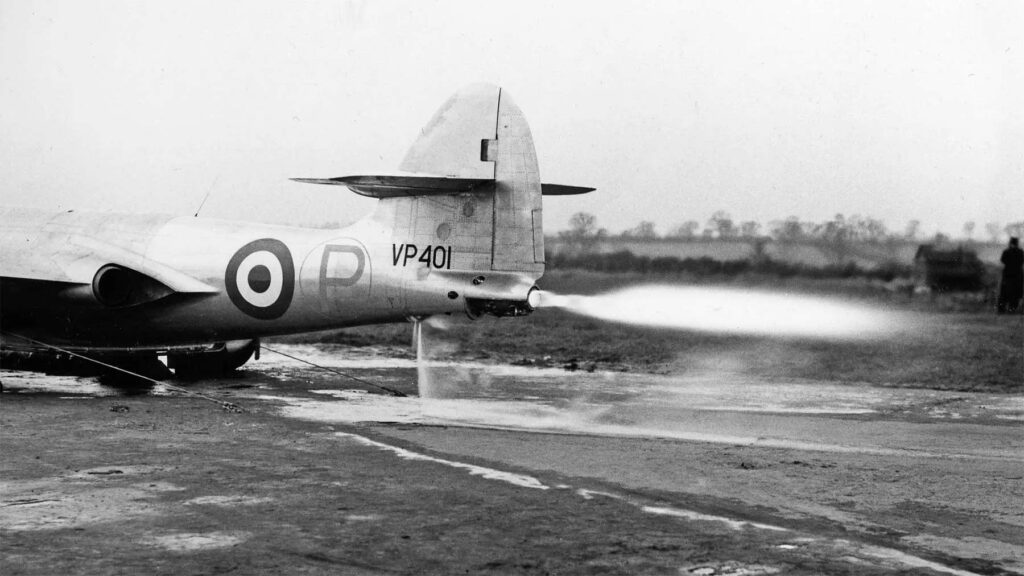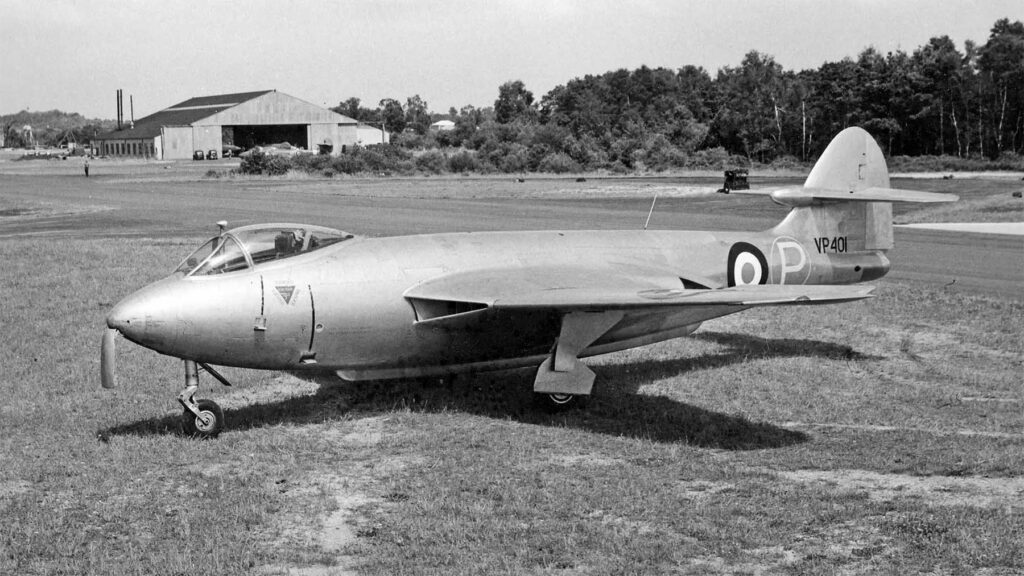The Hawker P.1072 was an experimental British aircraft, combining jet and rocket propulsion, tested in the early 1950s.
In brief
The Hawker P.1072 was a unique experimental aircraft developed in the United Kingdom in the early 1950s. It was based on the Hawker Sea Hawk, a naval fighter, but with a significant modification: the integration of a rocket engine alongside the conventional turbojet. This hybrid propulsion system was intended to explore the benefits of combined jet and rocket power, particularly for improving takeoff performance and high-altitude flight capabilities. The P.1072 was a single-seat, straight-wing aircraft with a top speed boosted by its auxiliary rocket engine. While it provided valuable data and insights, the P.1072 remained a one-off experimental project and did not directly lead to operational aircraft development. Its significance lies in the research it contributed to the field of mixed propulsion systems in aviation.
The Hawker P.1072 stands as a notable example of experimental aircraft design in the post-World War II era, during a period of rapid advancement and innovation in aviation technology.

History of the Development of the Hawker P.1072
In the early 1950s, the field of aviation was undergoing significant changes, with jet propulsion becoming increasingly dominant. The Hawker P.1072 was developed in this context, at a time when aircraft designers were exploring ways to enhance the performance of jet-powered aircraft, particularly in terms of takeoff and high-altitude flight.
The project was initiated by Hawker Aircraft Ltd, a prominent British aerospace manufacturer. The objective was to test the feasibility and advantages of a hybrid propulsion system, combining a traditional turbojet engine with a rocket engine. Such a system was expected to provide short takeoff capabilities and improved high-altitude performance, potentially offering a significant tactical advantage for military aircraft.
The program was launched in the early 1950s, with the prototype being a modified version of the Hawker Sea Hawk, an existing naval fighter. The P.1072 first flew on November 20, 1950. It did not have a NATO nickname, as it was a unique, one-off experimental design, not intended for mass production or operational deployment.
Design of the Hawker P.1072
The Hawker P.1072 was based on the airframe of the Hawker Sea Hawk, but with notable modifications to accommodate its hybrid propulsion system. The aircraft was fitted with a Rolls-Royce Nene turbojet engine, typical of early British jet fighters, and a de Havilland Sprite rocket engine.
The aircraft measured approximately 12 meters (39 feet) in length, with a wingspan of about 11.3 meters (37 feet). The integration of the rocket engine required structural reinforcements and additional fuel tanks for the rocket’s hydrogen peroxide fuel.
One of the key design advantages of the P.1072 was its potential for rapid takeoff and enhanced performance at high altitudes, thanks to the additional thrust provided by the rocket engine. However, the dual propulsion system also introduced complexities in terms of weight, balance, and fuel management.
Performance of the Hawker P.1072
The performance of the Hawker P.1072 was marked by its hybrid propulsion system. The Rolls-Royce Nene turbojet engine provided standard jet propulsion, while the de Havilland Sprite rocket offered additional thrust. This combination allowed for a top speed that was higher than the standard Sea Hawk, though exact figures are not widely documented.
The P.1072’s service ceiling and range were also improved by the rocket engine, enabling it to operate at higher altitudes and potentially for longer durations. The additional thrust was particularly beneficial for short takeoff scenarios, a critical advantage in naval operations.
When compared to other aircraft of the era, the P.1072’s unique propulsion system set it apart, although its experimental nature makes direct comparisons challenging. The project was more about exploring new possibilities in aircraft propulsion rather than competing with existing operational aircraft.
Variants of the Hawker P.1072
The Hawker P.1072 was a singular experimental prototype and did not have multiple variants. Its design and development were focused on testing the specific concept of hybrid jet and rocket propulsion, and as such, it remained a unique example in the field of aviation research.

Military Use and Combat of the Hawker P.1072
The Hawker P.1072 was never used in military operations or combat, as it was purely an experimental aircraft. Its role was to provide data and insights into the potential of mixed propulsion systems for future aircraft designs. The P.1072 did not carry armaments, and its operational use was confined to test flights and research missions.
The aircraft was not sold to other countries, nor was it intended for production or operational deployment. Its legacy lies in its contribution to the understanding of hybrid propulsion systems, which influenced later aircraft designs, albeit indirectly.
The Hawker P.1072 represents a fascinating chapter in aviation history, reflecting the innovative spirit and exploratory nature of aircraft design in the early jet age. While it did not lead to a direct line of operational aircraft, the lessons learned from its development provided valuable insights into the capabilities and challenges of hybrid propulsion systems, contributing to the evolution of military and civilian aviation technology.
Back to the experimental aircraft section.